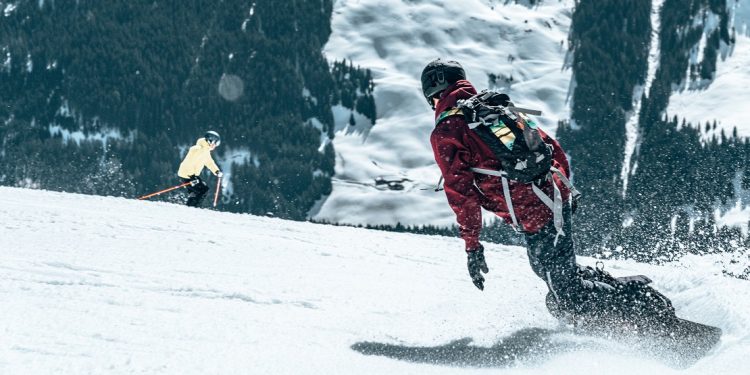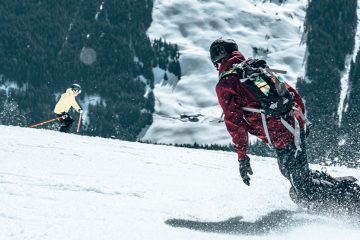
Basics for Your Best Trip
The soft hush of falling snow. The pleasant bite of winter wind. The intense peed as you flash down a steep slope. There is no winter sport quite like skiing. It is easy to understand why travelers around the world flock to mountain resorts after the first snow fall.
Unfortunately, many vacationers find themselves less than fully prepared for a ski vacation. From ski equipment to personalized instruction, your selection of a mountain and thought of what you will do off the slopes, there is a lot to decide.
This is where we step in! Read on to review what you will need to do prior to beginning your skiing vacation.
Pick What You Will Do
The first step might sound a little odd, but the most essential thing for a successful ski trip is deciding what your prime activity will be. Will you ski or snowboard? You might think there is little difference between the two activities, but this is far from true.
In some ways, skiing is the easier of the two options. While snowboarding may seem cooler, learning the sport can feel physically counterintuitive and canting your body down the slope may prove challenging for beginners. Your selection of skiing or snowboarding can affect numerous other factors, such as your equipment and even your mountain choice.
Select Your Destination
The mountain you will pick is important too. Sure, if you want to shred the slopes, then you might consider Idaho’s Schweitzer Mountain or Breckenridge in Colorado or British Columbia’s Whistler Blackcomb. These are all great places for snowboarding.
Mammoth Mountain in California caters to hardcore snowboarders, but also boasts a bevy of beginner-friendly areas. Colorado’s Vail features some of the world’s most technical and challenging runs. It also has luxury dining options, microbreweries and distilleries, and unique glamping options. Sun Valley, Idaho, caters mostly to beginners and also has great options for Nordic (cross-country) skiing, snowmobiling and even sleighing.
You get the idea. Just like selecting your preferred activity, picking a mountain and resort will determine much of your trip’s character. Want some more help in making your decision? Ski.com’s resort finder does a great job of narrowing down your options.
Quitting your job, packing your whole life into a single bag and setting off to travel the world is the most positive and exciting move you will ever make.
Buy (or Rent) Your Gear
Jeans are not ideal during your ski trip, right? If you want to avoid looking gauche and being cold, then you will definitely want to purchase some ski gear essentials beforehand. Invest in a base layer (think ankle to neck thermal underwear coverage). You will need an outer layer too (ski socks, pants, a coat, gloves, goggles and a hat). Pundits debate whether or not you should buy your own helmet and that is where another option comes in: rentals.
Snow sports are notoriously pricey and if you are not an avid enthusiast, it makes sense to rent everything. While some helmets are almost as cheap to buy as they are to rent (hence the debate), consider renting more expensive items such as boots, skis, poles and snowboards. The only problem you will find in doing so will likely come from the overabundance of shops willing to rent to you near the mountain. Consider visiting My Skirent if you would like help sorting through all of the options.
Choose Your Instructor
If bouncing down moguls does not rattle you and you do not think twice about detouring through off slope, tree lined trails and backcountry skiing, then you do not need any instruction. The rest of us, though, should probably consider it. Many have not skied for years or have neophytes in our groups. One thing is for sure, there is no better way to ruin a trip than to put unprepared people on the slopes, especially youngsters.
Some resorts, such as Utah’s Park City Mountain Resort, incorporate instruction right into the ordinary experience of enjoying the mountain. You can also always check with a local ski shop and ask for recommendations. Those wanting a refresher can probably get away with a half day group class. Newer to the sport? You should definitely consider one on one instruction, preferably for at least a full day.
Plan Your Passes and Routes
There is one essential piece of ski equipment that newcomers can easily overlook: the lift pass. The cost of actually getting up the mountain may shock you the first time you see it. For example, the cost of a single day pass at Aspen Snowmass (one of the most popular resorts in Colorado) can run close to $200 for an adult. Fortunately, you will find plenty of options to whittle down that price tag. Buying early helps, as does getting a package deal when you book your resort and (potentially) picking them up in a local ski store. If you plan to hit multiple slopes for multiple days, consider purchasing a Mountain Collective, Ikon, or Epic pass. Though seemingly pricey, these passes offer great bang for your buck, providing you access to multiple resorts across North America and sometimes offering heavily discounted children’s passes.
Also, before you ride the lift up, plan out a couple of skill appropriate runs down the mountain first. This can be as easy as chatting with a fellow skier over your map or scouting it out in advance at Skimap.org. The last thing you want is to accidentally end up peering down a trail named, say, Devil’s Fiddle or Lower Organ Grinder or Steeper Than Hell (all real monikers, by the way) and discover it is the only way down the mountain.
Consider Off-Slope Recreation
Sometimes winter vacationers can get so focused on the skiing that they forget how much wonderful stuff happens off of the slopes. That is why it makes sense for you to plan what activities you want to do when you are not on the mountain. Make no mistake, most resorts offer plenty of alternatives such as dog sledding, snowmobiling, tubing, snowshoeing and the like. Some mountain towns also have great gourmet scenes, posh spas and awesome entertainment.
Like everything else in your ski trip, enjoying the times when you are not skiing is all about understanding your options and planning out your ski essentials. A little proper preparation can make for a truly memorable ski trip.
